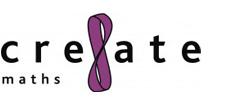Moments and Hooke's law
The resources in this list look at moments and Hooke's Law. The list provides a range of activities, lesson ideas, film clips, background information, practical tips and suggested teaching strategies to address misconceptions.
The activities link to the following areas of the 2014 National Curriculum:
• moment as the turning effect of a force
• simple machines give bigger force but at the expense of smaller movement (and vice versa): product of force and displacement unchanged
• force-extension linear relation; Hooke’s Law as a special case
• forces: associated with deforming objects; stretching and squashing – springs
• measurements of stretch or compression as force is changed
• opposing forces and equilibrium: weight held by stretched spring or supported on a compressed surface
Visit the secondary science webpage to access all lists: www.nationalstemcentre.org.uk/secondaryscience
- ALL
- Teacher guidance
- Video
- Activity sheet
- External link
Teacher guidance
Investigating Turning Forces: Moments
This is an extension activity about moments that is likely to be most effective when used with more able students to push their understanding. It uses a disc rather than a beam and hence shows that it is the perpendicular distance to the pivot not just the distance that is important.
It is designed to be used as a teacher led demonstration and it would be sensible to have the disc prepared and mounted beforehand. The use of mini white boards as described in the teacher notes is a good addition to aid student engagement.
Moments: Revision
A nice card sort activity where students can check what they know at the end of the topic.
Machines 11-14
Lift one of your students with just one hand! Here’s a whole set of resources from the Institute of Physics (IOP) on the topic of levers specifically designed for Key Stage Three students. You can find the activities in the Teaching Approaches section. The Physics Narrative section and the Teaching and Leaning notes will be particularly appreciated by those teaching outside of their specialism.
As you might expect from the IOP, this is a well thought out scheme which develops and challenges student’s ideas as it is worked through.
Video
Demonstrating Physics: Forces
The first demonstration on this film makes an excellent introduction to moments and can be used to really explore pupils' ideas about forces – a bit of assessment for learning there! Invite students to describe the forces on the box, maybe even giving them cardboard arrows that they can place where they think forces are acting.
To extend the demonstration into a longer discussion about forces, prepare the box before the students come into the room. As in the film it should be well over the edge of the table. Fix a piece of string from the box to the ceiling so that it looks as if it is holding up the box. Lead a discussion about the forces acting on the box before inviting one student to sit under the box whilst you cut the string.
Now lead another discussion about the forces on the box before opening it to let out the helium balloon. After a further discussion about the forces, remove the balloon before inviting students to suggest what must be in the box. This is a really good demonstration for teachers to use to develop your own questioning skills.
Activity sheet
Stretchiness
This is a lovely introduction to using forces to stretch objects. Students will enjoy using the jelly snake sweets, it prompts them to think about experimental design and there are lots of opportunities to develop numeracy skills.
It could lead into the classic Hooke’s law experiment where students measure the extension of a spring when different weights are added or you could stick with the snake theme and replace the spring with a stretchy animal. (They are available cheaply, type "stretchy animal toy" into a search engine to find stockists)
Why Did the Rope Break?
This booklet is rather dated now but the ideas it contains could provide a good basis for an investigation. Students are challenged to find out why the wire rope on a crane broke and it gives context for work on forces and Hooke’s law. Teachers would probably want to use much of the information provided here but re-write it in a more attractive format.
External link
Balancing a beam
This is the classic experiment on moments and it’s still well worth students carrying it out as they will get a real feeling for how moments work. The instructions here from the Institute of Physics (IOP) are clear but some classes will struggle preparing the beam so that it is balanced. Even students who are clear about what they are doing may find it difficult to attach the paper clips accurately and so teachers may want to use pre-prepared beams (new rulers are usually fine).
Encourage students to design their own results table and discuss how many times the measurements should be made and what units they are in.
The optional bit at the end of the instructions is good for those who work fast or need some extension.
A see-saw weighing device
Once they have got the idea of moments, students will enjoy this fun practical where they use moments to weigh objects in the room, each other or the teacher. You’ll probably want to run this as a teacher led whole class activity but it will be one where you can engage the whole class quite readily.
Obviously you need to be sensitive to body image issues and only use students who are willing volunteers.






